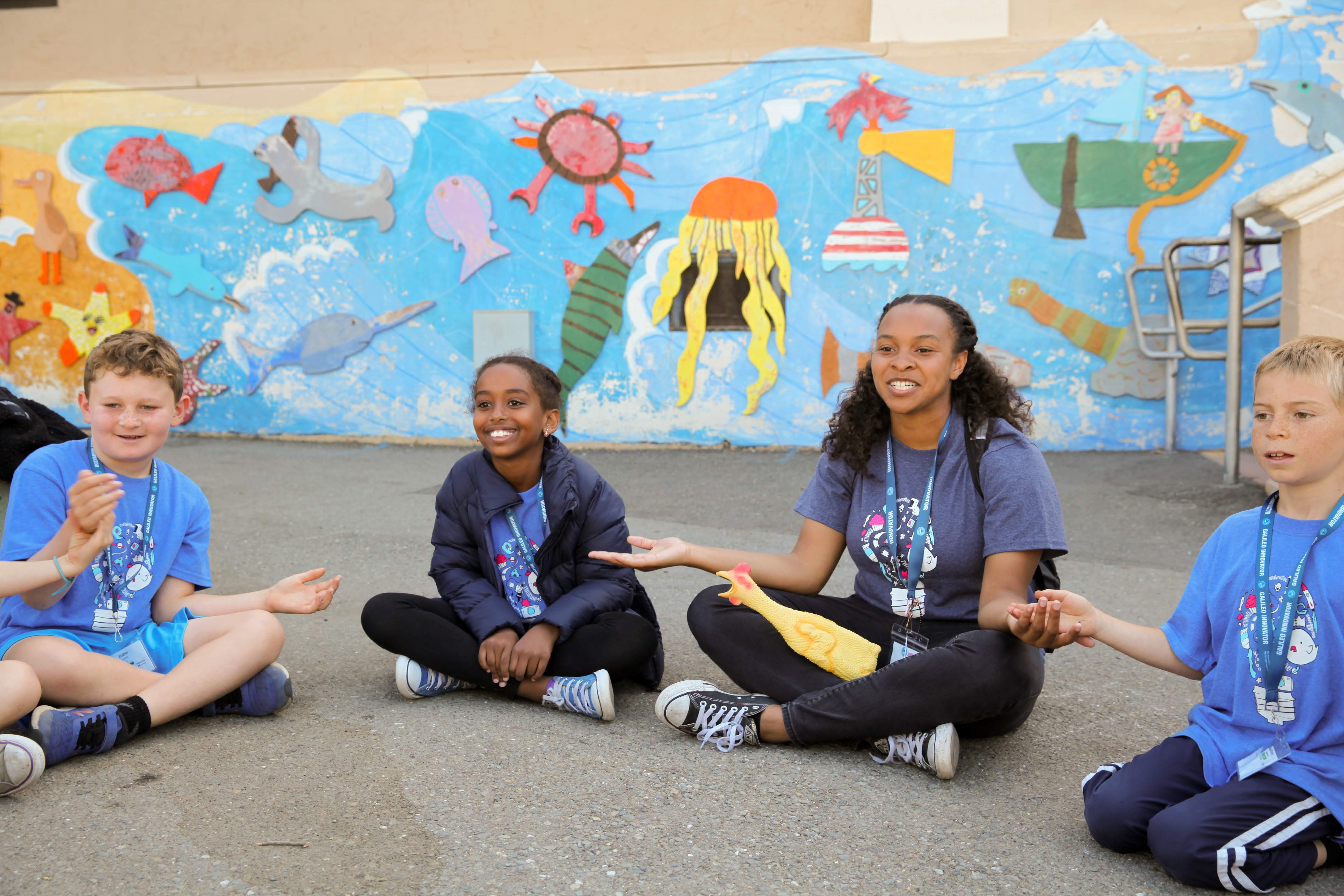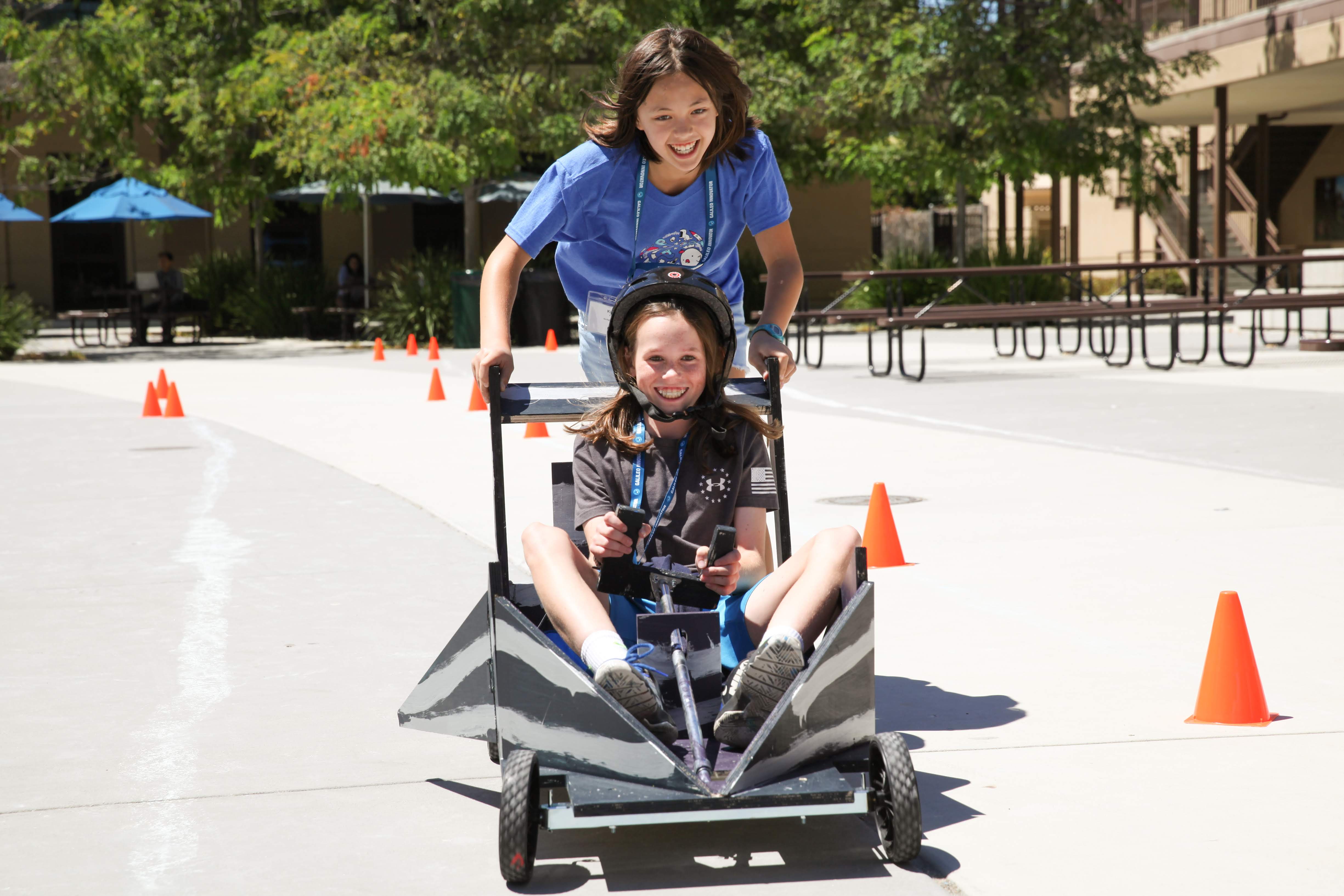Across San Francisco Bay, Southern California, and Chicagoland, campers of all ages can pick from themes such “Expedition to Everest” or “Deep Ocean Explorers,” where they might explore the science of scaling mountains, how to make blizzard shelters and rescue robots, craft art depicting deep sea ocean dwellers, or engineer exploration vessels inspired by octopus tentacles. Galileo Learning takes traditional camp activities like arts and crafts or outdoor adventure, and applies a method called the Galileo Innovation Approach, which is designed to nurture innovative potential in each camper.
Facilitating these camps takes upward of 2,500 staffers who work throughout the summer, as well as extensive planning and training by the Galileo Learning team in the months leading up to camp. It's a huge undertaking–for many of the staff members, it might be their first time working at the camp or even their first job ever. For camp directors and managers, there's a running list of rolling deadlines throughout the year: hiring, training, running the camp, shutting down, and everything in between.

Tapping into subject matter experts
Tom Bowen works as Galileo Learning's Director of Learning and Development, as well as its Director of Technology, so his day-to-day entails not only training the new camp staffers but also developing the strategy, implementation, and support of their internal tools. Because the camps are distributed, their staffers themselves are spread across the country, making it hard to do large, in-person trainings. So the team employs a blended model: a comprehensive online training experience paired with dedicated onsite training days before camp opens.
“That way they get the chance to learn all about how to do their work prior to showing up, but when they show up they get to actually practice applying what they've learned before the first day of camp,” Bowen explained. “It was previously all in-person training, but once we expanded to multiple regions that wasn't scalable for us. We had to convert all of the in person training into online training. And Airtable really helped us refine our workflows so that we could collaborate with all our subject matter experts efficiently.”
Airtable is one of their most central productivity tools. They call it their “one-stop-shop for almost everything.” This includes collaborating with all of the individuals responsible for programming–whether that be the camp curriculum teams, field ops, or people ops. They work together to design the trainings, figuring out what the best format is.
Airtable really helped us refine our workflows so that we could collaborate with all our subject matter experts efficiently.
“Should it be a video?” Bowen asked. “Should it be interactive learning? Should it be something that's document-based like a wiki or PDF? Should it be worksheets, quizzes, and so on and so forth?” The next step involves working with each subject matter expert to create, review, edit, update, and upload the content to their learning management system.
Collaboration in content development
The team moved away from a clunky system where documents lived in multiple places, and tracking workflows involved turning to several sources.
“What we found was that keeping the information up-to-date, with multiple documents and sources, was a giant headache,” Bowen explained. “We love the ability to just keep expanding records within Airtable, creating different views for very specific workflows, but having it all still live within a single source!”
The team has what they call a “master view” which shows the scope and sequence of every single deliverable they've ever created as a department. They have also built views that are specific to the individual teams or subject matter experts.
“So if I need to collaborate very heavily with the people operations team, I can build a view that only contains the training content that's relevant to them, so they don't have to weed through everything we've created. We have the production calendar view where we can look at all the different shoots that we have scheduled. We have administrative views which show us what version has been uploaded to the LMS, what description is listed and so on.”

Many of the team members have even taken to using Airtable to track their own personal work—documenting wins, challenges, sharing what they need support on, assigning priority levels, and more efforts that result in increased transparency and efficiency between each collaborator.
The Galileo Innovation Approach (GIA) says that innovators need three things:
- A mindset that promotes innovative work
- Substantive knowledge that guides breakthrough thinking, and
- A process that supports bringing the best ideas to fruition
To Bowen, the way they use Airtable is a reflection of this approach. “We very much believe Airtable and our own pedagogies are very similar: the power of prototyping, testing, redesigning,” Bowen shared. “We looked at the tools that we were using and felt like there was this huge opportunity to improve, and then evaluated numerous tools out there. Airtable rose to the top. It's been two years now that we've been using it, and we've only grown in how we use it. And I feel like there's still so much more potential.”